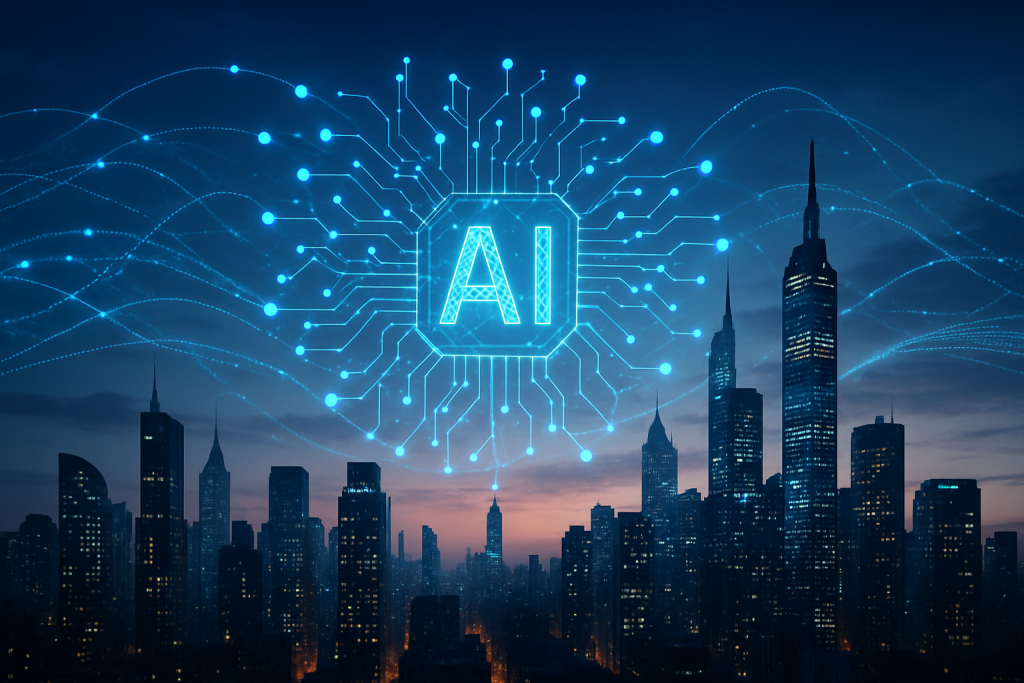The year is 2025. Flying cars? Not quite. But the real revolution is humming quietly in server farms and coding workshops across the globe: Artificial Intelligence. And yesterday, June 24th, the International Finance Forum (IFF), think of them as the Davos crowd for the digital age, dropped a bombshell report: the inaugural Global AI Competitiveness Index. Forget comparing GDPs; now we’re measuring who’s got the smartest robots on the block.
Why should you care? Because this isn’t just about bragging rights. It’s about economic power, national security, and who gets to shape the future. Remember the space race? This is the AI race, and the IFF just fired the starting gun.
The IFF, an organization dedicated to untangling the world’s financial and economic knots, realized something crucial: AI isn’t just a tech fad. It’s the new oil, the new steel, the new everything. So, they set out to create a yardstick, a way to objectively measure which countries are leading the charge and which are lagging behind. It’s like trying to quantify cool-ness, but with algorithms and data instead of subjective opinions. Think less “America’s Got Talent” and more “Turing Test Throwdown.”
So how do you even begin to compare something as complex as a nation’s AI prowess? The IFF broke it down into five key dimensions, like the Infinity Stones of AI domination:
- Technical Development and Applications: This isn’t just about having AI; it’s about using it. Are AI companies thriving? Are they building things that matter? Think self-driving trucks revolutionizing logistics, or AI-powered medical diagnoses saving lives.
- Research and Innovation: This is where the magic happens. Are universities and research labs churning out groundbreaking AI research? Are they filing patents that will shape the future? It’s the difference between having a hammer and inventing the nail gun.
- Human Capital: AI doesn’t build itself (yet!). You need talented engineers, data scientists, and ethicists to make it all work. Are there enough skilled people to fuel the AI revolution? Are educational programs keeping up? Think of it as the “School of Hard Knocks,” but with more Python and less physical labor.
- Policy and Regulatory Environment: This is where governments play a crucial role. Are there clear rules of the road for AI development? Are there incentives for innovation? Or is regulation stifling progress? It’s like trying to drive a race car on a dirt road.
- Market Acceptance and Infrastructure: Even the best AI needs a place to live and thrive. Is there enough computing power? Is the public willing to embrace AI-powered solutions? Think about it: you can’t build a smart city without a reliable internet connection.
Each of these “stones” is further broken down into sub-categories, blending hard data with more qualitative assessments. It’s a complex cocktail of metrics designed to paint a nuanced picture of each country’s AI landscape.
Now, for the juicy part: who won? The IFF is being coy. They haven’t released the full rankings, keeping us all in suspense like waiting for the next season of “Severance.” But they did drop some tantalizing hints. They revealed that countries with strong research institutions, supportive governments, and thriving AI industries are leading the pack. No surprise there. It’s like saying the Golden State Warriors are good at basketball; stating the obvious.
More interestingly, they highlighted the rise of “emerging players”- nations investing heavily in AI education and infrastructure. This suggests that the AI race isn’t a foregone conclusion. With the right strategy, even smaller countries can make a significant impact. Think of it as the “Rocky” montage of AI development.
And perhaps most importantly, the report stressed the critical role of government policy. Countries with clear, forward-thinking AI regulations are seeing higher competitiveness scores. This is a wake-up call for policymakers everywhere: get your act together, or risk falling behind.
So, what does this all mean?
The IFF’s report isn’t just an academic exercise; it’s a strategic tool. It gives governments and businesses a benchmark to assess their AI capabilities, identify weaknesses, and plan for the future. It’s like having a detailed map of the AI landscape, showing where the gold is buried and where the quicksand lies.
The implications are far-reaching. Countries that score high on the index are likely to attract investment, talent, and economic opportunities. They’ll be the ones developing the next generation of AI-powered technologies, from personalized medicine to sustainable energy. Those who lag behind risk being left in the dust, struggling to compete in an increasingly AI-driven world. It is the difference between being a driver, or being driven.
But there’s also a broader societal impact. As AI becomes more pervasive, we need to address ethical concerns, such as bias, privacy, and job displacement. The IFF’s report can help foster a more informed and nuanced discussion about these issues, ensuring that AI benefits everyone, not just a select few. It’s about creating a future where AI empowers humanity, rather than enslaving it. Think “Star Trek” utopia, not “Terminator” dystopia.
The IFF’s Global AI Competitiveness Index is more than just a report; it’s a sign of the times. It marks a new era where AI is not just a technology, but a key driver of economic and social progress. The race is on, and the stakes are higher than ever. So buckle up, because the future is AI, and it’s arriving faster than you think.
Discover more from Just Buzz
Subscribe to get the latest posts sent to your email.


